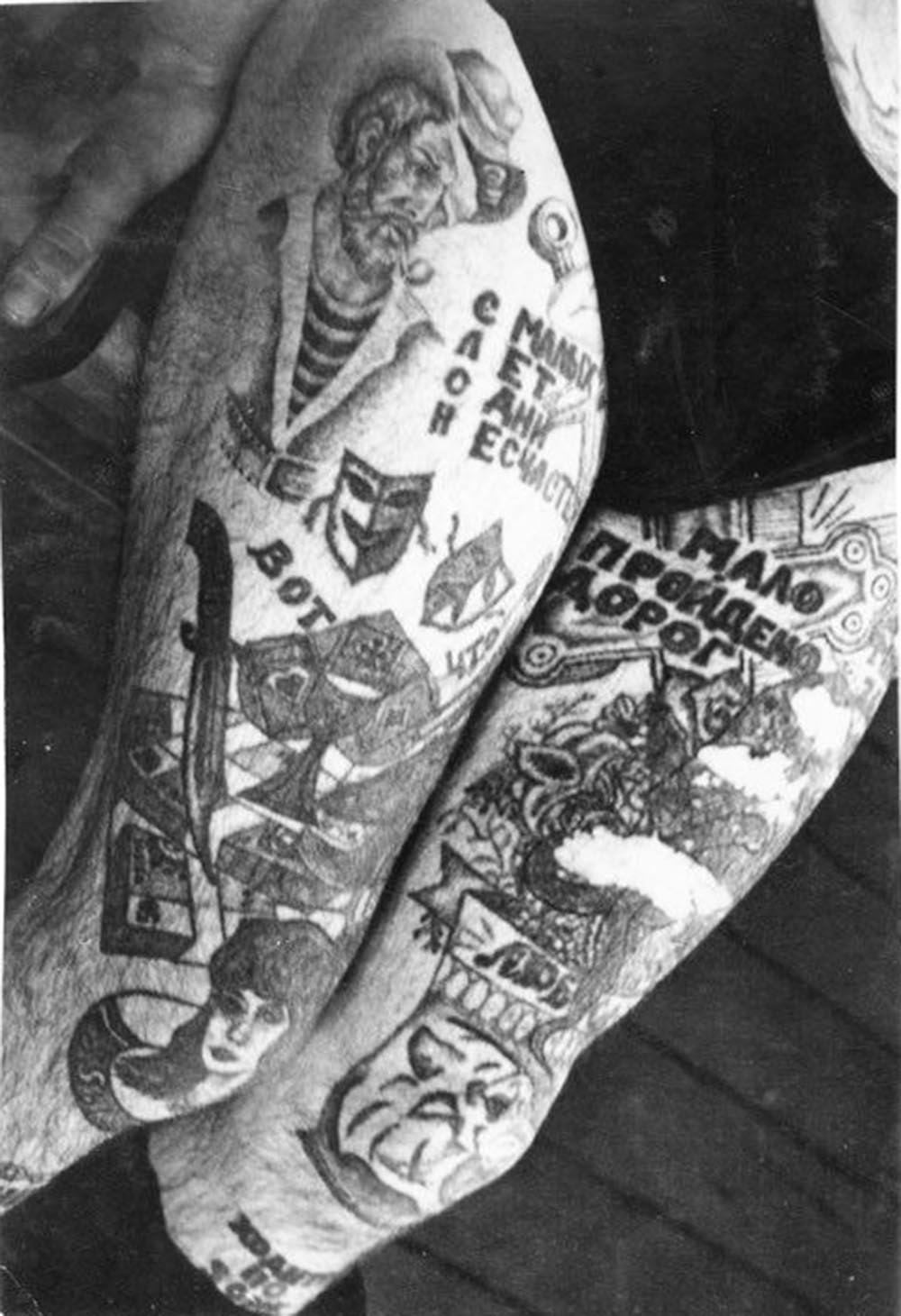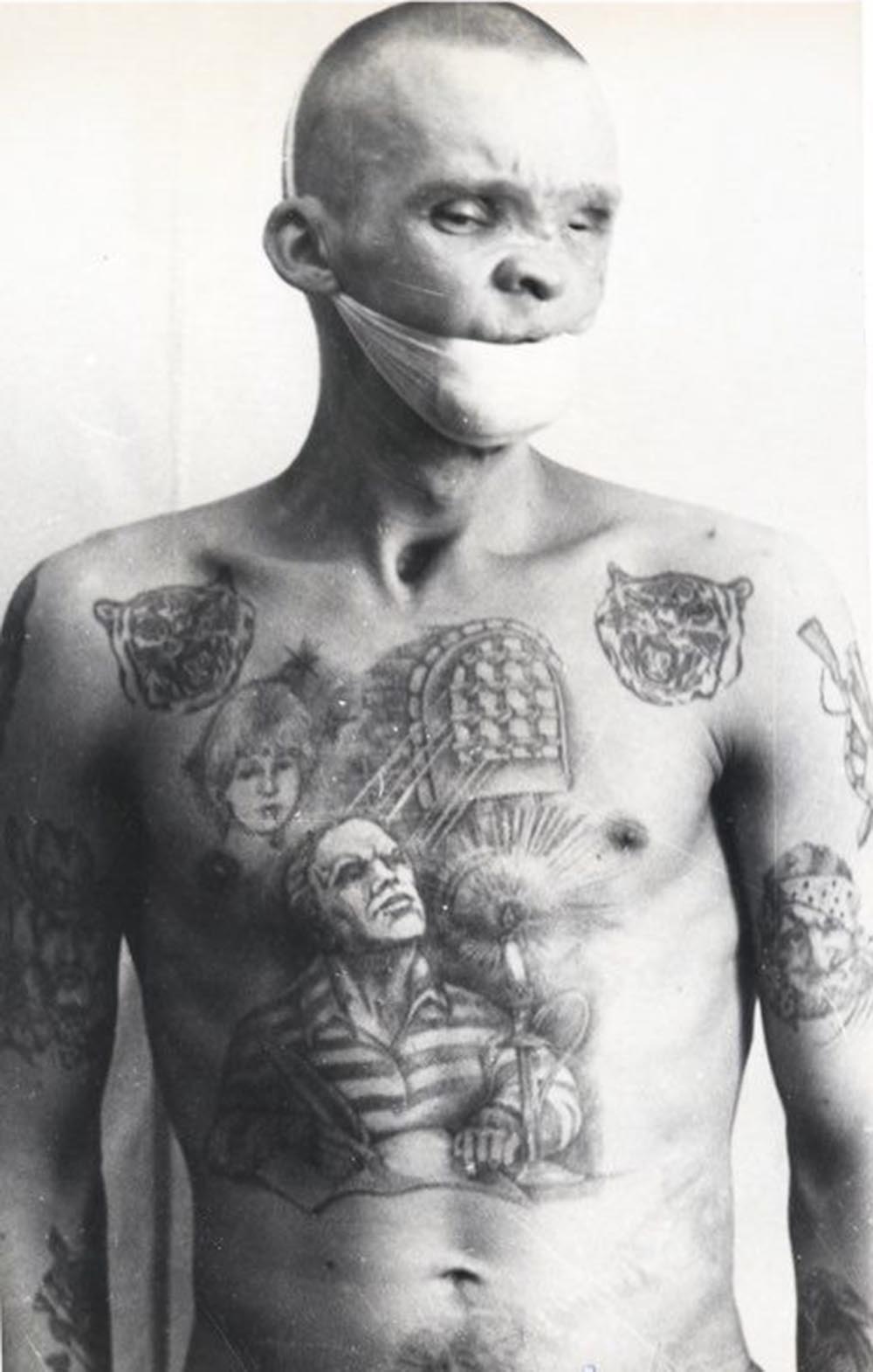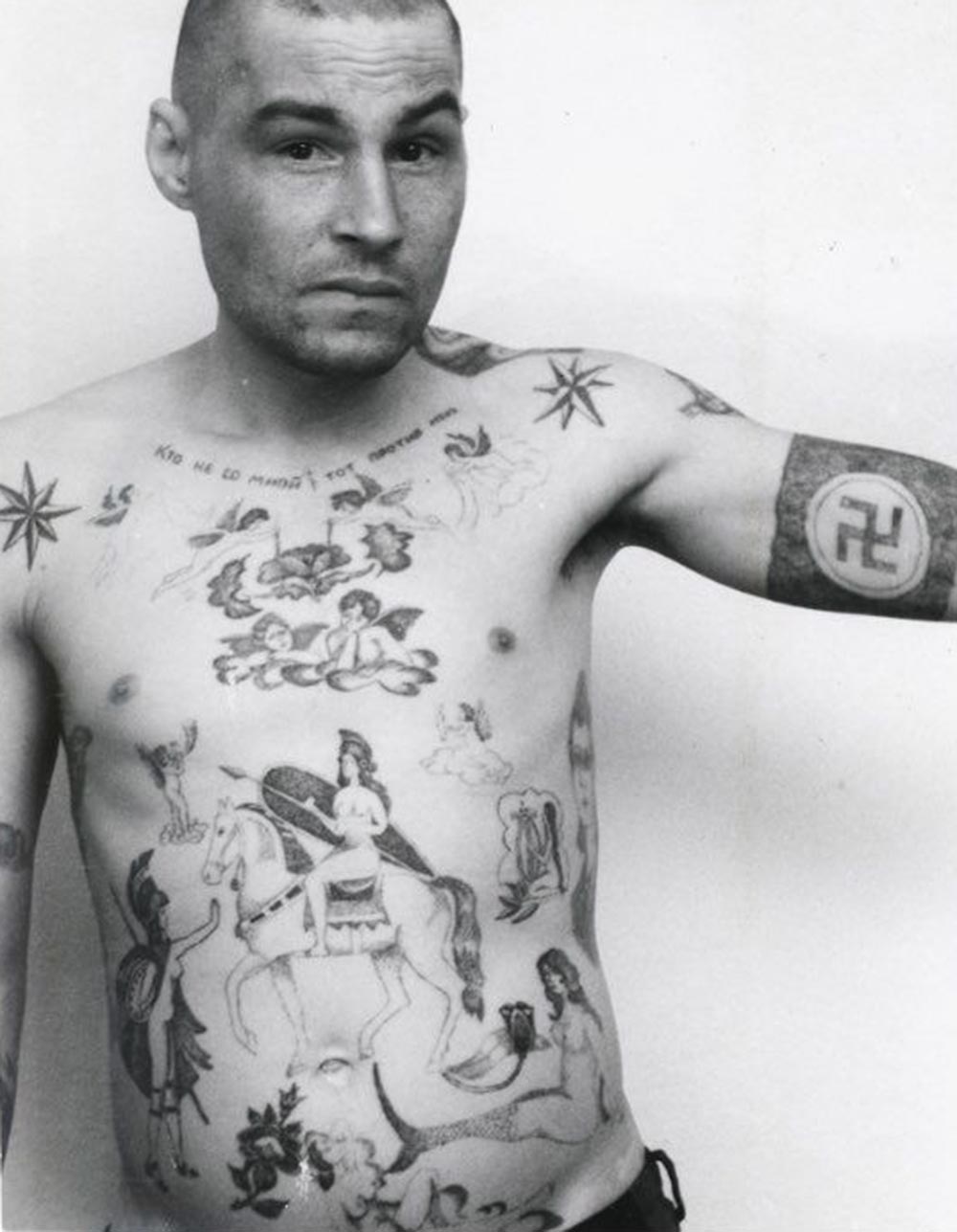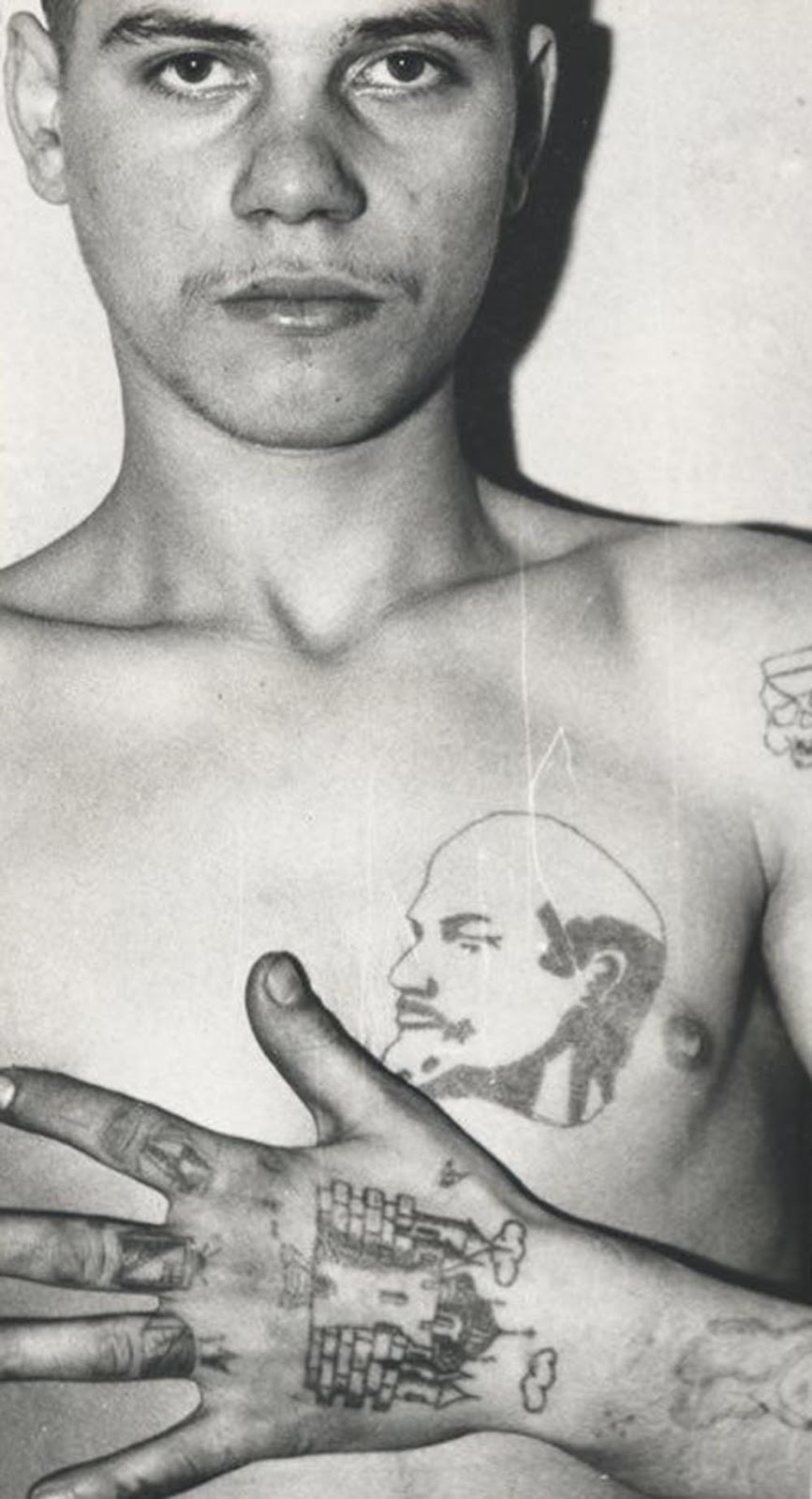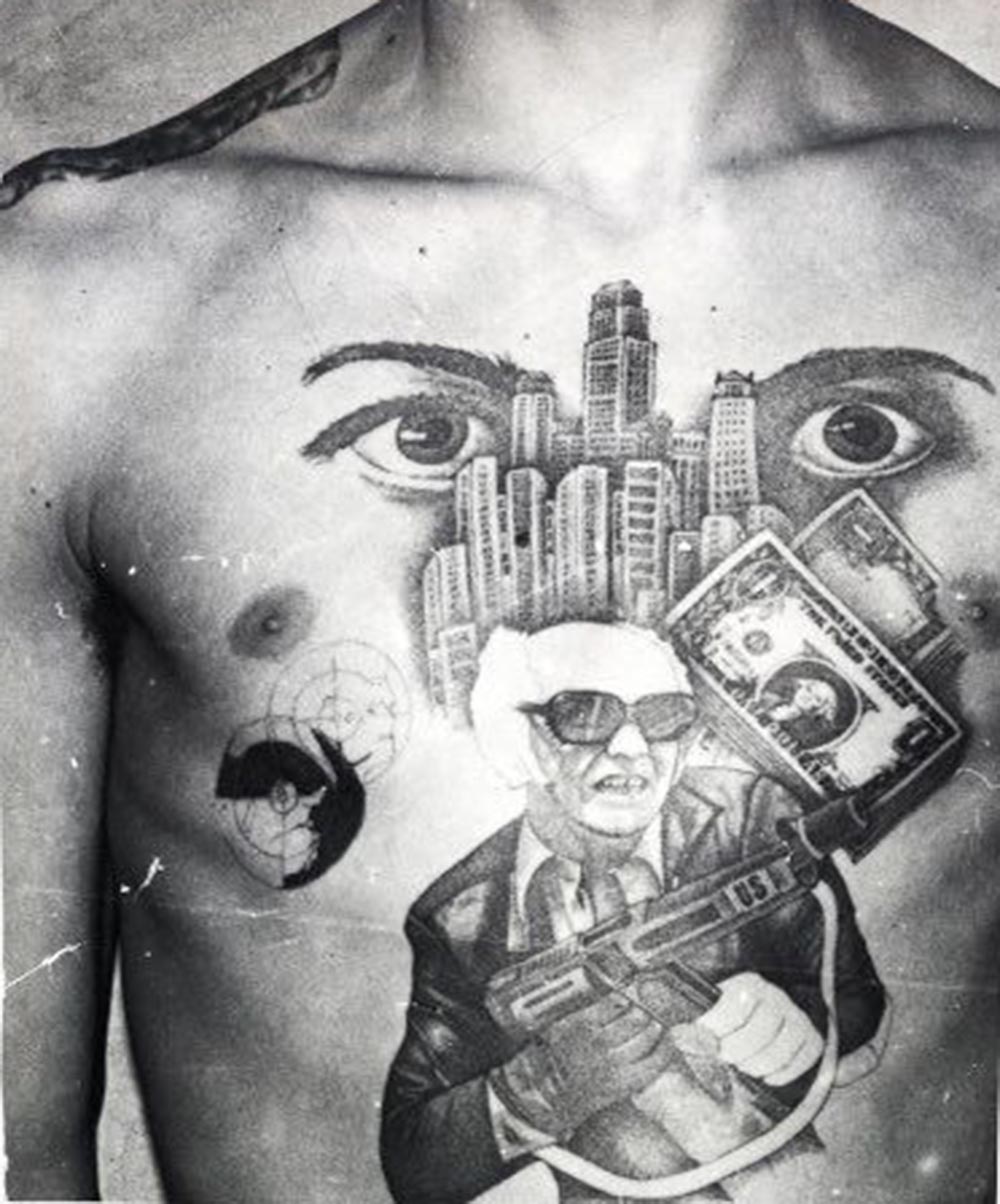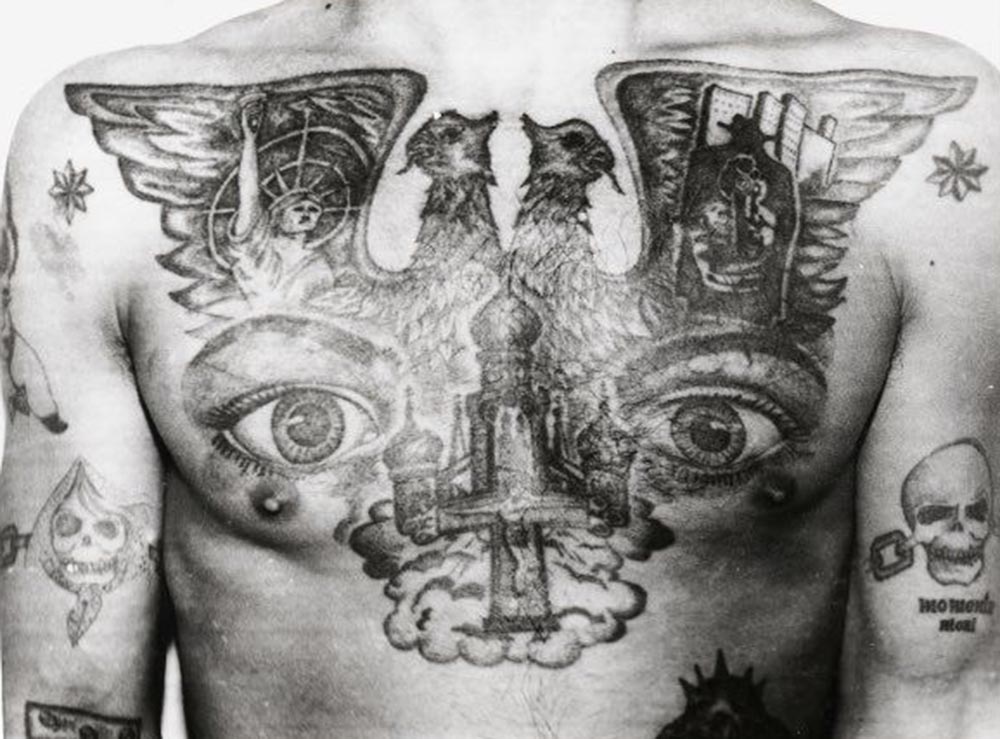Arkady Bronnikov, regarded as Russia’s leading expert on tattoo iconography, recently released a collection of around 180 photographs of criminals locked up in Soviet penal institutes. Russian Criminal Tattoo Police Files, published by FUEL, is probably the largest collection of prison tattoo photographs to date, at 256 pages. In the 1930s, Russian criminal castes began to emerge, such as the Masti (suits) and the Vor v Zakone (rus. Вор в Законе) or Blatnye (authoritative thieves), and with that a tattoo culture to define rank and reputation. Up until World War II, any tattoo could denote a professional criminal, the only exception being tattoos on sailors. A thief’s collection of tattoos represents his “suit” (mast), which indicates his status within the community of thieves and his control over other thieves within the thieves’ law. In Russian criminal jargon or Fenya (феня), a full set of tattoos is known as frak s ordenami (a tailcoat with decorations). The tattoos show a “service record” of achievements and failures, prison sentences, and the type of work a criminal does. They might also represent his “thief’s family”, naming others within hearts or with the traditional tomcat image. Misappropriation of the tattoos of a “legitimate thief” could be punished by death, or the prisoner would be forced to remove them themselves “with a knife, sandpaper, a shard of glass or a lump of brick”. In the 1950s Nikita Khrushchev declared a policy for the eradication of criminality from Soviet society. Along with propaganda denouncing the “traditional thief” that had grown in popularity in Russian culture, punishments in the prisons intensified for anyone that identified as a legitimate thief, including beatings and torture. As a response to this persecution, the thieves’ laws were intensified and the punishment for prisoners wearing unearned tattoos increased from removal to rape and murder. By the 1970s, the intensification of the thieves’ laws had resulted in reprisals against the legitimate thieves, orchestrated by prison authorities who would often throw a legitimate thief into cells with prisoners they had punished or raped. To reduce tensions, criminal leaders outlawed rites of passage and outlawed rape as a punishment. Fights between inmates were outlawed and conflicts were to be resolved through mediation by senior thieves. Additionally, a fashion for tattooing had spread through juvenile prisons, increasing the number of inmates with “illegitimate” tattoos. This ubiquity along with the reduction in violence meant that the “criminal authorities” stopped punishing “unearned” tattoos. In 1985, perestroika and the new increase in tattoo parlors made tattooing fashionable, and further diluted the status of tattoos as a solely criminal attribute. Common designs and themes grew over the years, often having different meanings depending on the location of the tattoo. The imagery often does not literally mean what it is depicting—for example, tattoos displaying Nazi imagery represent a rejection of authority rather than an adherence to Nazism. Combinations of imagery, such as a rose, barbed wire, and a dagger, form combined meanings. According to lexicographer Alexei Plutser-Sarno, tattoos become the only “real aspects of his life”. They are a symbol of the owner’s commitment to the war against the non-thief, the police (menty), and the “bitch” (suka). The environment in the Soviet era was one of heavy visual propaganda, and the tattoos are a reaction to that, and a “grin at authority” (oskal na vlast), often directly parodying official Soviet slogans with Communist Party leaders often depicted as devils, donkeys, or pigs. (Photo credit: Arkady Bronnikov / FUEL). Notify me of new posts by email.
Δ Subscribe



